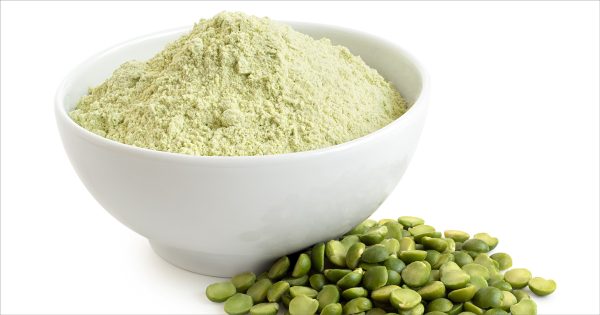
Pea protein is a protein material isolated from peas, which is mainly used to make milk substitute foods. It is mainly extracted from yellow peas (Pisumsativum) and contains typical legume amino acids. The different species of pea strains can affect the properties of the protein. The legumin isolated from pea protein has characteristics similar to casein, so pea protein products are often used to replace whey protein foods. Because of consumer concerns that soy products may be genetically modified, some pea protein products are marketed as a replacement for soy products. Pea protein is often used to boost the protein content of smoothies and shakes because it is naturally vegan and hypoallergenic and suitable for almost any diet.
1. Pea protein contains a certain amount of amino acids, which are composed of 8 essential amino acids and 12 non-essential amino acids (which can be synthesized by the human body without food intake). Pea protein is a high-quality protein and a great source of iron. Protein accounts for 16% to 20% of the body’s weight, and pea protein can help with muscle growth, weight loss, and heart health. Rich in vitamins A, D, E and K, pea protein has its own health benefits.
2. Physical and chemical properties: The protein solubility of pea protein is close to 0 in the isoelectric point region (pH4.0~6.0), and the solubility increases rapidly under neutral, alkaline and extremely acidic (pH2.0, pH3.0) conditions , where the highest solubility of globulin is close to 80%, which is significantly higher than that of protein isolate (PPI). The denaturation temperatures of vicilin (7S) and vicilin legumin (11S) are about 83°C and 92°C respectively, and the thermal stability of 11S is higher than that of 7S. Fluorescence spectroscopy and surface Chemicalbook hydrophobicity analysis showed that the isolated protein was partially denatured, and the acid-base treatment during its preparation led to a change in protein conformation and exposure of hydrophobic regions. At pH3.0~9.0, the emulsifying ability and emulsifying stability of pelinin were significantly higher than that of PPI. At pH5.0 (near the isoelectric point), the emulsifying ability of protein is positively correlated with the solubility, and the emulsifying ability is the lowest, while the emulsifying ability increases rapidly in the area away from the isoelectric point.
Because pea protein has good functional properties, such as solubility, water absorption, emulsification, foaming and gel forming properties, etc., it can be used as a food ingredient for meat processing, plant-based dairy products, plant-based ice cream, snack foods, etc. , Play a role in improving product quality and nutritional structure.
Pea starch is becoming a real alternative in the food and starch industry. It is odorless, acid and heat resistant. Pea starch and pea protein are suitable for:
Gel substitute for soups and desserts
Free labeling (GMO) in the food industry.
Food for vegetarians and vegans
Sports Nutrition and Protein Powders
gluten free food
A raw material for biodegradable packaging
